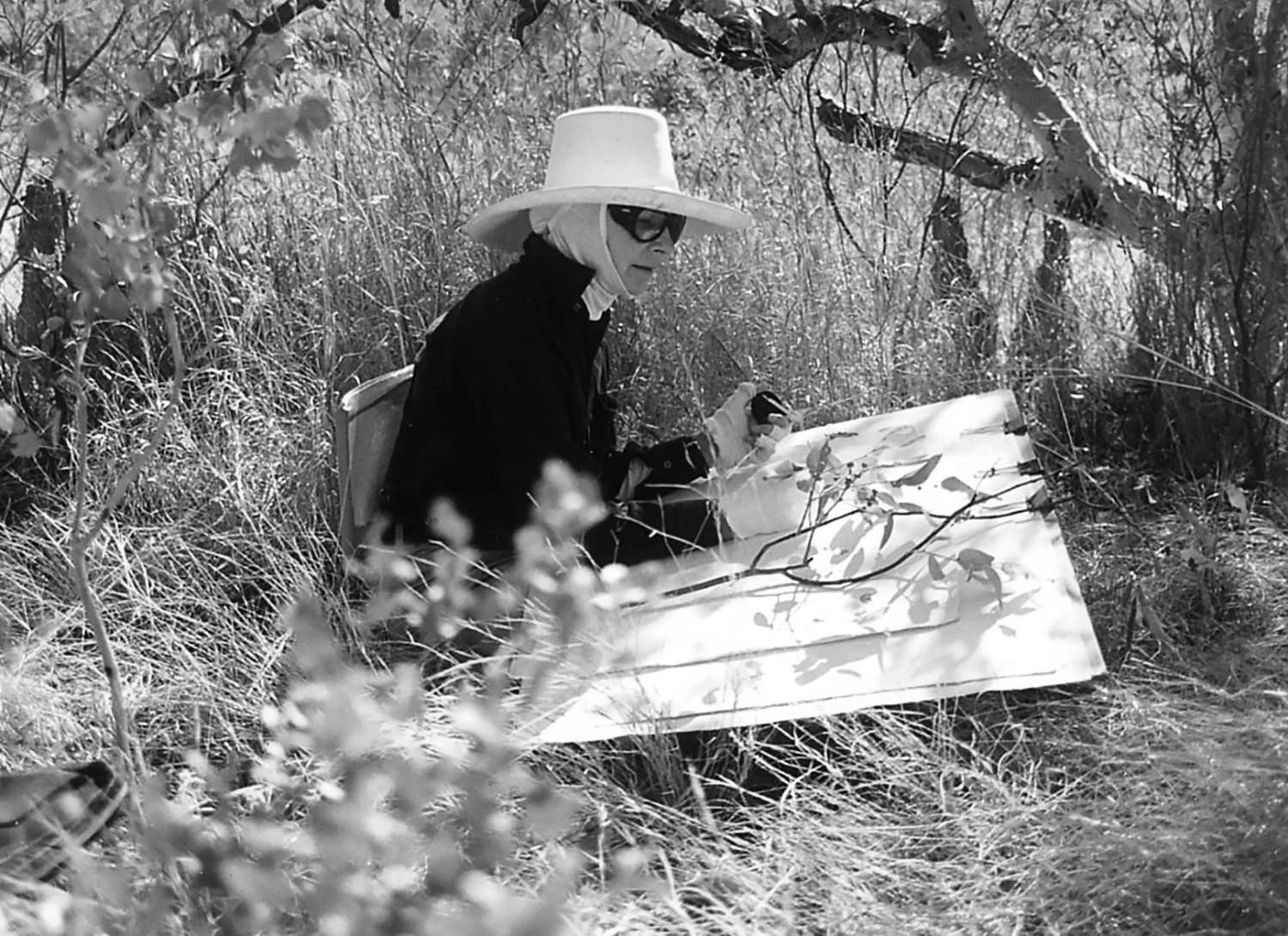Robyn spent her childhood on the Southern Tablelands of New South Wales where her love of landscape combined with an inquisitive eye for botanical detail set the scene for her unique Australian paintings. Robyn studied art in Sydney and Paris in her twenties with later visits to Japan influencing her complex technique. Now living in Tasmania this publication combines her love of the landscape, plants and trees of central Australia with an understanding of Aboriginal life before the trials of European settlement. VAST is her third publication after Artistic Reflections on the Garden (1986) and Kimberley Odyssey (1996).
The notes and drawings that make up this publication filled the pages of Robyn's journals kept throughout these expeditions, as she attempted to capture the geology, vegetation and history of this timeless land.
Each expedition gave Robyn a deeper understanding of the heart of our island continent. She was inspired by the beauty of the harsh landscape and have developed a deep respect for the Australian Aboriginal communities, who have made these areas their home for thousands of years. Robyn especially admired their understanding of the seasons and geology, in particular, their knowledge and appreciation of the medicinal and nutritional properties contained within Central Australia’s vegetation. Robyn felt enormous excitement as she began to appreciate the hidden properties of certain plants only found in these extremely remote and usually dry areas, plants that at first glance, seemed dry, hard and often spikey to the touch. Her excitement changed to despair and regret as she realised the impact on the landscape of European settlement in just two hundred years. The impact not only on Aboriginal culture, but also the essential natural environmental elements that sustained Aboriginal families for hundreds of years, particularly water. A knowledge of water sources in this parched landscape meant survival.
Despite some efforts by state governments to make amends for past mistakes, by the end of Robyn's 2013 expedition the only solution she could see was a wish to go back in time and start the European arrival in Australia again. This time with respect and communication with the land’s Indigenous people and with the recognition that this is not a European environment, but a unique island continent with distinct plants, animals and birds, requiring our respect and knowledge. This isn’t possible, so Robyn's deep feelings of regret remain a constant.



